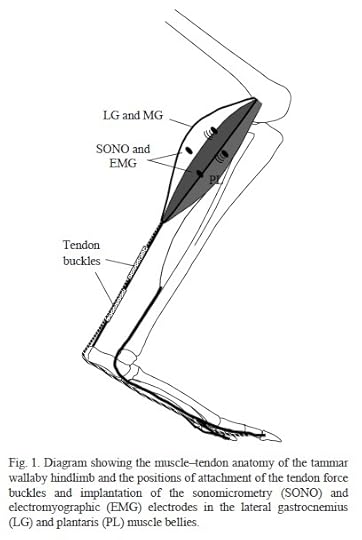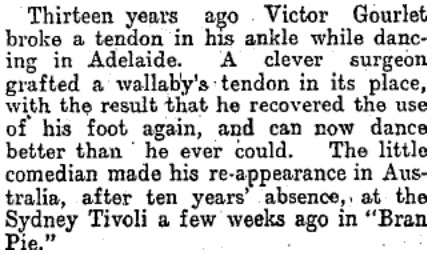Marc Abrahams's Blog, page 423
February 25, 2014
Machiavellian romance shrouded in the Veil of Darkness
You suspect you’re in for a jolly read —a jolly ride, really, through the realm of romantic evil! — when a scholarly report begins with the words:
When are women drawn to shady, self-centered, sly, cunning, and manipulative men? … In this work, we postulate in our novel Veil of Darkness hypothesis that men with “dark” personality traits fare particularly well in contexts of less illumination. We test this hypothesis in the mating/courtship domain with the example of dark/cloudy vs. bright/sunny weather. Specifically, we examine whether weather conditions may function as a moderator of beneficial courtship outcomes of male dark personalities.
There is now a published paper that begins with those very words. The paper is:
“Shrouded in the Veil of Darkness: Machiavellians but not narcissists and psychopaths profit from darker weather in courtship,” John F. Rauthmann [pictured here], Marlit Kappes, Johannes Lanzinger, Personality and Individual Differences, epub February 7, 2014.
[NOTE: The authors, at Humboldt-Universität zu Berlin, Germany and Leopold-Franzens Universität Innsbruck, Austria, are seeking single persons to be "participants" in a study of "online attraction".]
Here’s detail from the newly published study. The caption says “Fig. 4. Process model of men’s Machiavellianism leading to beneficial courtship outcomes under dark weather conditions. Note: Only significant paths are included. The dotted lines represent the direct effect of Machiavellianism on smiling (p > .05). ⁄⁄⁄p < .001 ⁄⁄p < .01, ⁄p < .05.:

(Thanks to investigator Neil Martin for bringing this to our attention.)

A Moving, Perhaps Incomplete Explanation of Remembering
Comes now (or came in 2010, anyway), an only partial explanation of a phenomenon:
“Why do we move our eyes while trying to remember? The relationship between non-visual gaze patterns and memory,” Dragana Micic, Howard Ehrlichman and Rebecca Chen, Brain and Cognition, 2010 Dec;74(3):210-24. The authors, at City University of New York (CUNY), report:
“reasons for their appearance remain obscure.”
Come more recently (came in 2012, to be precise), two of the same co-authors told a less partial part of what they think about why people move their eyes when they (the people) think:
“Why Do People Move Their Eyes When They Think?” Howard Ehrlichman and Dragana Micic, Current Directions in Psychological Science, April 2012 vol. 21 no. 2 96-100.
“On average, people move their eyes about twice as often when searching through long-term memory as they do when engaged in tasks that do not require such search. This pattern occurs when people are in face-to-face situations, when they are in the dark, and when they have their eyes closed. Because these eye movements do not appear to serve visual processing, we refer to them as ‘nonvisual’ eye movements and discuss why the eyes move during thinking that does not involve vision.”

February 24, 2014
mudDNA — new jargon for old junk
A reporter asked me if there’s a single good name for all the kinds of DNA that are still not well understood — the grab bag of stuff that some people describe as “junk DNA”.
Here’s what I suggested. Maybe it’s useful. Maybe it’s not.
Name: “murkily understood DNA”
Abbreviation: mudDNA
Pronunciation: “mud DNA” or “muddy-NA”
The redundancy/recursion (murkily understood DNA DNA) seems characteristic of the stuff it’s describing.

Credentials quiz: Ph.D, M.MENSA, FRICS, etc.
Presumably a person’s professional credentials are important. This quiz will help you gauge how well you recognize and understand the importance of credentials.
THE QUIZ QUESTION: How many of this person’s credentials — which are presented here in traditional abbreviated form — can you name in their full, unabbreviated form?
Firas A Zaki, PhD M.MENSA,FRICS,PQS,PMP,RMP,SP,CCE,PSP,EVP

These are the ten (ten) credentials this person lists in his Linked-In listing. The ten are only some of his credentials. His Toastmasters International listing reassures us that there are more:
Russ Zack Firas A. Zaki-, CCIT00
Member
Russ is a Mathematician, Civil Engineer, Masters/PhD, with 12 certifications and more than 24+ years’ of practical experience in Projects Management fields for portfolio of programs/ projects worth over CAN$ 10 Billion.

Hawaiian shirts under the spotlight of rubbish theory
Question: Are Hawaiian shirts ‘rubbish’? For answers, see: ‘From Kitsch to Chic: The Transformation of Hawaiian Shirt Aesthetics’ Clothing and Textiles Research Journal, 2003 21: 75. In which professor Marcia A. Morgado (Apparel Product Design & Merchandising, Department of Family and Consumer Sciences, University of Hawai‘i) explains :
“An analysis of the transformation of the shirt – from tourist kitsch to highly valued collectible, and from collectible to global fashion – is framed on rubbish theory. The transformation is traced to an assortment of myths that reconstitute the souvenir commodity as an indigenous ethnic art form and a scarce relic of Hawai‘i’s romanticized past and to a surfeit of publications that position the shirt as a collector’s item. The merits of rubbish theory as a framework for the analysis are assessed, and apparel scholars are asked to consider the influence of myth and scholarship on changes in the aesthetic codes of other fashion and appearance-related commodities.”
The professor has recently extended the investigations into Hawaiian Shirts with a paper co-authored by colleague professor Andrew Reilly entitled: ‘Funny Kine Clothes: The Hawaiian Shirt as Popular Culture’
(in: Paideusis – Journal for Interdisciplinary and Cross-Cultural Studies: Volume 6 – 2012)
“In the land of aloha, funny kine clothes is a pidgin expression that refers to a peculiar form of dress. The Hawaiian shirt is funny kine clothes.“
Note: the scholarly journal Paideusis (Saint Mary’s University, Canada) should not be confused with the scholarly journal Paideusis (Simon Fraser University, Canada)
Further reading: Michael Thompson’s original groundwork on Rubbish Theory

February 23, 2014
PR headline of week: “Attractive Men Have Less Nasal Bacteria”
This week’s Press Release Headline of the Week is from a press release pumped out for the American Journal of Human Biology:
Beauty & Bacteria: Slim, Attractive Men Have Less Nasal Bacteria than Heavy Men
(Thanks to investigator Erwin Kompanje for bringing this to our attention.)
BONUS: For students with a strong mental stomach: Read the study itself, and then read the press release. Count up how many assumptions are made on the publicity journey from Point A (what the researchers say they actually did) to Point B (what the researchers say they conclude) to Point C (what the press release headline says).

For sodium disposal enthusiasts
This 1947 video is catnip for sodium disposal enthusiasts [HT Bob O'Hara]:
Many people have re-enacted that on a tiny scale, albeit in a bigger body of water. Here’s one example:
If you have a nuclear processing facility, you can pick up some tips on alternate methods of sodium disposal by reading the International Atomic Energy Agency‘s “Sodium cleaning and disposal methods in experimental facilities“.
BONUS: A song to accompany the disposal of sodium (the chemical symbol for which is, of course, “Na“):

February 22, 2014
Sadomasochism, a Stroop test, and a dorsolateral prefrontal cortex
 Sadomasochism, a Stroop test, and a dorsolateral prefrontal cortex figure prominently, almost exclusively, in the Huffington Post’s report about the highlights of the annual meeting of the Society for Personality and Social Psychology, along with a Dance of Souls:
Sadomasochism, a Stroop test, and a dorsolateral prefrontal cortex figure prominently, almost exclusively, in the Huffington Post’s report about the highlights of the annual meeting of the Society for Personality and Social Psychology, along with a Dance of Souls:
Called the “Dance of Souls,” this ritual involves people getting temporary skin piercings, through which hooks attached to ropes are placed. The ropes of one person are connected to those on others in the group or to a fixed object and are pulled taut as music or drums are played. These events are also known as “energy pulls” and are seen as primarily spiritual, not sexual, [Northern Illinois University's Brad] Sagarin [pictured here] told Live Science.
BONUS: Web site for the conference.
BONUS: Energy pulls [with lots of photos of partly naked people attached to each other by ropes and skin-piercing hooks].
BONUS: Dance of Souls for beginners.
BONUS: A Dance of Souls at the Southwest Leather Conference.

World Sword Swallower’s Day, created by an Ig Nobel Prize winner
Today, February 22, is International Sword Swallowers Day, created by sword swallower — and Ig Nobel Prize winner — Dan Meyer, who also created the organization Sword Swallowers Association International, of which he serves as president. Dan, an American, together with Dr. Brian Witcombe, a Briton, shared the 2007 Ig Nobel Prize for medicine, for their penetrating medical report “Sword Swallowing and Its Side Effects” [published in the British Medical Journal, December 23, 2006, vol. 333, pp. 1285-7]. This video documents the acceptance speech the pair delivered at the Ig Nobel Prize ceremony at Harvard in 2007:
Huffington Post reports about Dan and the day:
For instance, in 1868, a sword swallower assisted Dr. Adolf Kussmaul in Freiburg, Germany, in developing the first rigid endoscopy. Another sword swallower underwent the first esophageal electrocardiogram in Wales in 1906.
In both cases, the researchers got the credit, but the sword swallowers’ names disappeared down the esophagus of time, and Meyer just doesn’t think that’s right.”Sword swallowers go unrecognized, but their physical and mental abilities to shut off bodily reflexes is very helpful to scientists studying the inner workings of the body,” he told HuffPost in 2012.
To emphasize that point, Meyer scheduled World Sword Swallowers Day in February, which is also National Swallowing Disorders Month.
(Thanks to investigator Neil Judell for bringing this to our attention.)

Further studies on wallaby tendon
Wallaby tendon is not just a useful material for surgical sutures.; it can be analyzed for its elastic properties in comparison to the tendons of other animals, and can be used as a model in surgical studies. Physiologists have also been interested in the kinetics of kangaroo and wallaby hopping, to address issues such as how the creatures can maintain their gait despite lacking the “very short muscle, very long and elastic tendon” leg structures of animals like deer and horses.

Bennett’s wallaby, Bruny Island, Tasmania
The recent literature on wallaby tendon is dominated by two sets of investigators.
* * *
In the 1990s, Robert F. Ker and Xiao Tong Wang of the University of Leeds performed several studies on the mechanical properties of tendons under stress, using tendons from various different parts of the body. Their experimental system was the Bennett’s wallaby, using specimens that had been culled from Whipsnade Wild Animal Park. The quality of Wang and Ker’s data was so robust that it was used as a model for the mechanical properties of “organic materials” in general, by Ingomar L. Jäger of the University of Leoben Department of Metal Physics.
For more, see “Creep Rupture of Wallaby Tail Tendons” (1995, Journal of Experimental Biology 198:831-845); “Fatigue Rupture of Wallaby Tail Tendons” (1995, Journal of Experimental Biology 198:847-852); and the more generally applicable “Fatigue Quality of Mammalian Tendons” (2000, Journal of Experimental Biology 203:1317-1327).
* * *
The other main avenue of research into wallaby tendon can be best summarized as “wallabies on treadmills”. This dates back to the 1970s but has been extended in the past twenty years with a multitude of studies by Andrew Biewener of Harvard; Craig McGowan of the University of Idaho; and the late Russell Baudinette of the University of Adelaide. Some highlights include:
Biewener AA, Konieczynski DD, Baudinette RV (1998), In vivo muscle force-length behavior during steady-speed hopping in tammar wallabies: J. Exp.Biol. 201:1681-1694 (or “wallabies on treadmills at different speeds”)
Biewener AA, McGowan C, Card GM, Baudinette RV (2004), Dynamics of leg muscle function in tammar wallabies (M. eugenii) during level versus incline hopping: J. Exp. Biol. 207:211-223 (or “wallabies on uphill treadmills”)
McGowan CP, Baudinette RV, Biewener AA (2005), Joint work and power associated with acceleration and deceleration in tammar wallabies (Macropus eugenii): J. Exp. Biol. 208:41-53 (or “wallabies speeding up and slowing down on treadmills”)
Gutmann AK, Lee DV, McGowan CP (2013), Collision-based mechanics of bipedal hopping: Biol Lett 9:20130418 (or “wallabies vs. kangaroo rats”)

from Biewener et al (2004)
* * *
But before any of these studies were performed, wallaby tendon was used as a source for surgical xenografts.
In the 1980s, Dr. Klaus Schindhelm sought to improve the storage and preparation of tendons for orthopedic surgery, using kangaroo tail tendon as a model, including two studies (1, 2) in which kangaroo tendons were transplanted into sheep.
And before that — in fact, over a century ago — wallaby tendon proved its worth in restoring the vim and pep of Australian music-hall entertainer Victor Goulet, as described in this June 1920 blurb from the Wellington Evening Post.

Amazing surgeons Adelaide had in 1907!
Follow Amboceptor on Twitter: @AmboceptorBlog

Marc Abrahams's Blog
- Marc Abrahams's profile
- 14 followers





